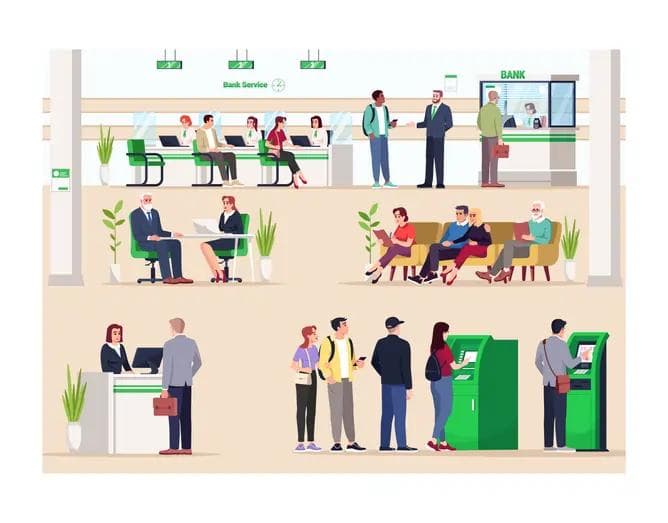Next generation credit: Gen Z’s impact on banking
Next generation credit: Gen Z’s impact on banking
Published by Jessica Weisman-Pitts
Posted on September 27, 2022

Published by Jessica Weisman-Pitts
Posted on September 27, 2022

By Shabnam Wazed, the founder and CEO of AGAM International
More than one third of the world’s population is Generation Z.
To give you an idea of what this means in figures, the UK has approximately
12.6 million (19%) Gen Zers entering the workforce, whilst the world’s
eighth most populated country, Bangladesh, has well over 58 million Gen Zers
– a staggering 35% of the population, around 27% of whom live in urban
areas.
With larger numbers of young people entering the workforce at one time than
any generation before it, what legacy will these digital natives leave on
the banking sector?
Interestingly, wherever they are from, whether the UK or Bangladesh, Gen
Zer’s have common behaviours and common challenges for the banking sector.
Every generation approach money and personal finance in a different way.
Millennials discovered the road to adulthood was paved with financial
difficulties including slow pay growth and uncertain economic conditions.
This environment contributed to the development of the group’s spending
patterns and views toward debt.
Millennials made their fair share of financial blunders along the way (as
most generations do), but evidence is already accumulating suggesting the
“next generation”, Gen Z, is already learning lessons from their elders.
Some of Gen Zers’ older acquaintances struggled to reach high-paying
professional roles while simultaneously taking on significant debt. As a
result Gen Zers seem to be approaching personal finance with a level of
caution.
Financial institutions offer services to customers of all ages, but many
focus their marketing efforts on the youngest group, timed to coincide with
the time when they complete college and begin to enter employment. Building
a solid, enduring relationship with youthful customers can be profitable and
result in many years of business. Many people stick with the same retail
bank they joined as a college student for life. Institutions have the
chance to develop and maintain its brand with each new generation whilst
balancing the needs and wishes of older, existing customers.
Digital innovation and customer engagement is becoming fundamental to banks’
ability to differentiate themselves to customers. Gen Zers, as digital
natives, demand different approaches. They are forcing the banking system to
enter the innovation of technology.
There’s a proverb that says you can learn a lot about someone’s worldview by
looking at how it was when they were in their twenties.
Few generations in recent times have experienced pandemics, transformational
digital change, recessions, inflation, and global instability. Digital-first
customers are no longer the future of banking but the present. Unlike
millennials, who came of age during the 2008 global financial crisis, Gen Z
was expected to inherit a strong economy and record-low interest rates. The
Covid crisis changed all of this.
Keeping Gen Zers motivated and interested in their financial futures will
require creativity. Around 40% of Gen Zers use TikTok over Google for
search. Fun and educational, video led, banks’ communication needs to ensure
it reflects (and demonstrates an understanding of) the interests and
concerns of this group.
But what of credit?
In order to further promote economic accessibility, fintechs across the
world are working to make credit inclusive, making way for the younger
generations to be able to step out of the credit paradox and qualify for
their first loan.
Gen Z has recently entered the banking industry, and they are upending it.
The 2008 financial crisis impacted this generation’s parents, and they took
lessons from it. Gen Z have a new relationship to credit. Despite having
access to credit and the possibility of debt, Gen Z does not necessarily
make use of it. Even though the majority of this generation has at least one
loan account and is credit active, they handle their money wisely. The
majority of Gen Zers who use credit are managing their debt better than
Millennials did at the same age.
Spending
Gen Z are the obvious target for fast growing e-commerce brands. Gen Zers’
inspiration comes from aesthetic Pinterest boards, and TikTok highlights are
used to capture their every move; therefore, it only makes sense that their
methods of purchase are online first. And, e-commerce brands were quick to
embrace fintech solutions for part payments or delayed payments. Such
benefits previously were only limited to a smaller segment of customers
having credit cards.
Historically, to be eligible for this credit customers had to earn the
‘right salary,’ with the right amount of transaction histories to be
considered credit-able for the banks. Younger shoppers were almost always
excluded from that group. The Klarna Generation have been granted access to
credit in huge numbers. But, are these customers getting the ‘right’ credit?
With little access to Gen Z to date, banks’ are missing out on the
opportunity to service these customers.
And, with limited financial education, are Gen Z making the best financial
decision for themselves? This is where next generation UK fintech, AGAM
International, comes in. AGAM is the answer to the real-world financial
problems faced by the unbanked community. It provides lenders with the
information and access to those who have previously been denied a credit
score. With the creation of a more sophisticated credit scoring method known
as ‘Individual Independence Index’ individuals with limited credit
histories, but who the data show are suitable borrowers, are able to receive
access to loans – instilling a sense of financial confidence and security in
many individuals without previous financial knowledge.
In order to further promote economic inclusivity, fintechs across the world
are working to make credit accessible and it can only happen with digital
innovation in every step of the way.
To remain in business, let alone thrive, financial institutions must embrace
Gen Z’s digital native sensibilities and respond – and that means
accelerating their digital transformation, adopting more sophisticated
credit scoring and payment systems and communicating with Gen Zers in a
language and format they understand.
Shabnam Wazed, the founder and CEO of AGAM International
Explore more articles in the Banking category











